Learn about the best easy care low maintenance flowering shrubs and bushes you can grow in your yard or garden. The plants listed in this extensive guide are grouped into full sun, partial shade, and shady growing conditions. There are also deer-resistant and evergreen groups of low maintenance flowering shrubs and bushes here. Whether you are looking for flowering shrubs and bushes for the front yard, side yard, backyard or a special garden area, this list has you covered. Read on for easy care, low-maintenance flowering shrubs and bushes inspiration!
Table of Contents
My Low Maintenance Flowering Shrubs and Bushes Backstory
Often described as the backbone of a garden, flowering shrubs are generally reliable bloomers. Reliability is important to me, and so is hardiness. I am sorry to let you know that any plants which hope to do well in our yard must be low maintenance thrive on very little care. Our flowering shrubs definitely fall into this category. If you see a plant you like on my list, you can just assume that it is low-maintenance. Some of the most beautiful blooms in our yard are found on our shrubs. A few of the shrubs were given to us as gifts for Mother’s Day or as a Teacher Appreciation gift, making them all the more special.
My husband is quite talented when it comes to arranging plants and other landscaping details. I, however, end up planting things in rows, as noted in a previous blog post about flower containers. My talents are mainly relegated to the vegetable garden. I assist in the planting and choosing, but I am certainly not the master arranger of the shrubbery. Which flowering shrubs made my final list? I’m not going to give a lot of details about planting depth or anything. I just want to share my favorites from a low-maintenance gardener’s perspective. The easier to care for, the better. Read on to find out which are my favorites!
A Brief Word About Plant Hardiness Zones
We are located in plant hardiness Zone 8b, which means that our lowest temperatures range from 15 to 20 degrees Fahrenheit. To find out which zone you are in, search the USDA Plant Hardiness Zone Map. Just enter your zip code and you’ll know the answer!
Low Maintenance Flowering Shrubs and Bushes for Full Sun
If you are in a sunny location, here are some of the best low-maintenance perennial flowering shrubs and bushes that thrive in full sun:
Lantana (Lantana camara): Vibrant clusters of flowers in various colors, drought-tolerant, and attracts butterflies.
Butterfly Bush (Buddleja davidii): Fragrant and attracts butterflies, bees, and hummingbirds; requires minimal care. It is a vigorous grower, and we have had to trim ours back quite a bit.
Forsythia (Oleaceae forsythia): Our forsythia bush is one of my favorite flowering shrubs because it signals the coming of spring. Usually blooming in March for us, the bright yellow blossoms give me hope for warmer weather. Some people create beautiful arrangements with blooming forsythia branches. I am not very good at arranging things artistically, as referred to in previous blog posts about container plants and art. I simply enjoy gazing out the kitchen window at our lone forsythia during the still-chilly days of early spring. This is one of the splashes of yellow I like having as an accent color in our yard. It seems to thrive in our partially shaded backyard and needs little maintenance.
Lilac (Oleaceae syringa): One of my favorite things about this flowering shrub is its wonderful fragrance. When I was growing up, I wasn’t allowed to bring lilacs into the house. My mother developed headaches due to the smell of lilacs. As a result, I’ve just always enjoyed lilac blossoms left on the shrub, not as a cut flower. Mid-May is when the blooms are usually at their peak in our yard. I make a point of walking by our one lilac bush each day during this time to savor the aroma.
Russian Sage (Perovskia atriplicifolia): Beautiful silvery foliage and tall spikes of lavender-blue flowers; drought-tolerant.
Mock Orange (Philadelphus): Mock orange shrubs produce fragrant white flowers in late spring to early summer. They are generally easy to grow and can tolerate a range of conditions.
Rose of Sharon (Hibiscus syriacus) Rose of Sharon is a deciduous flowering shrub known for its large, showy flowers in a variety of colors. If you read on, you will learn that Rose of Sharon is known for its ability to produce blooms for an extended period of time during the growing season.
Crape Myrtle (Lagerstroemia indica): Showy summer flowers in various hues and attractive bark; relatively easy to maintain.
Knock Out Rose (Rosa ‘Knock Out’): Continuous blooming throughout the season, disease-resistant, and minimal pruning needed.
Lithodora (Lithodora diffusa): This low-growing perennial is well-loved for its intense blue flowers and glossy green leaves. It is often used as a ground cover in gardens and landscapes due to its spreading habit and attractive appearance. Grace Ward is the name of my favorite variety of lithodora. I appreciate its brilliant blue blossoms and low-growing, gently spreading structure. Our lithodora has grown quite large, and spills gracefully over the rocks in our retaining wall nearby. Our plant continues to thrive in its sunny location, despite the fact our black Labrador, Maggie, loves to lie in the middle of it. It’s very hardy!
Rosemary (Rosmarinus officinalis): Fragrant herb with blue flowers; thrives in hot, sunny conditions.Rosemary smells divine, and ours is useful as an herb specimen as well as being pretty to look at. With its blue blooms, it fits perfectly into my favorite color scheme. It’s a woody evergreen plant, and it needs a well-drained, sunny location to thrive. We like to use the branches as skewers on the grill. Mmm…delicious!
Autumn Joy Sedum (Hylotelephium spectabile): Succulent-like plant with long-lasting pink flowers; drought-tolerant.
Catmint (Nepeta spp.): Easy-to-grow perennial with spikes of lavender-blue flowers; attracts pollinators.
Texas Sage (Leucophyllum frutescens): Heat and drought-resistant, with lovely purple or pink blooms.
Yarrow (Achillea millefolium): Hardy and colorful perennial with flat-topped flower clusters; attracts pollinators.
Weigela (Weigela spp.): The trumpet-shaped flowers of weigela appear in late spring to early summer and come in various colors, such as pink, red, white, and even shades of yellow.I love our weigela shrub. We moved it from a sunny location to a part-sun location, and for a few years it did not bloom as profusely. However, just this past couple of weeks it has finally returned to its former glory. Hooray! The blooms are a stunning pink, and I missed them. I’m so glad they are back. One thing to watch out for: weigela blooms on year-old wood, so it’s best to trim after it blooms in late spring, after the blooms are spent.
These low-maintenance flowering shrubs and bushes will add beauty and charm to your garden without requiring constant attention. Remember to provide them with well-drained soil and occasional watering, especially during dry spells, to help them thrive in full sun conditions.
Low Maintenance Flowering Shrubs and Bushes for Partial Shade
Here are some of the best low-maintenance flowering shrubs and bushes that thrive in partial shade:
Azalea (Rhododendron spp.): Colorful and shade-tolerant, they bloom in various hues during spring. Here is the one we have in our yard.Grown from a plant which was given to me years ago for Mother’s Day, the brilliant pink blooms on this flowering shrub are stunning. We have it in a special place in our perennial garden in our backyard. It receives more sun than it used to, thanks to the recent absence of a large maple tree. This hardy, dependable bloomer usually flowers for us in April.
Camellia (Camellia japonica): Evergreen shrub with elegant blooms in shades of pink, red, and white during late winter to early spring.
Cape Fuchsia (Scrophulariaceae phygelius): This lovely shrub has magenta blooms shaped like trumpets. No relation to hardy fuchsia, this shrub grows amazingly well in our climate. Located in part-sun, this vigorous grower has beautiful dark green foliage. It does benefit from a trim each winter. Ours usually blooms for us in mid to late summer.
Hydrangea (Hydrangea spp.): With some varieties being shade-tolerant, they produce stunning, large flower heads in various colors. We have two hydrangea bushes. One was given to me as a Mother’s Day gift, and the other was a gift from a student 25 years ago. Thank you, Jonathan, wherever you are. The fourth grade class you were part of holds a special place in my heart. The beautiful periwinkle blue blooms on this flowering shrub remind me of the long-lasting pleasure gifts of plants can bring. Depending upon the acidity in your soil, hydrangea blooms may range from white to rose pink to bluish purple. The more acidic your soil, the more blue your blooms. Hydrangeas are very versatile that way, and the blooms make excellent dried floral arrangements. Late summer is when we get the best blooms.
Bleeding Heart (Dicentra spectabilis): Unique heart-shaped flowers on arching stems during spring.
Lily of the Valley (Convallaria majalis): Fragrant, bell-shaped white flowers in early spring.
Spirea (Spiraea spp.): A variety of species with beautiful cascading flower clusters, some of which can tolerate partial shade. Spirea blooms can be pink or white and blossom in late spring or early summer. There are also some mid-summer blooming varieties. Ours are pink, located in partial sun, and bloom in the summer. The branches of spirea can be fragile, so trimming in the winter may prevent branches from breaking due to the weight of snow.
Japanese Pieris (Pieris japonica): Evergreen shrub with early spring blooms that change color as they age.
Japanese Andromeda (Pieris japonica): Elegant white or pink flowers in early spring.
Bergenia (Bergenia cordifolia): Thick, glossy leaves with pink or purple flowers in early spring.
These low-maintenance flowering shrubs and bushes will add charm and color to your partially shaded areas without demanding too much care. Ensure they receive sufficient water and occasional fertilization to keep them healthy and flourishing in partial shade conditions.
Low Maintenance Flowering Shrubs and Bushes for Shade
Here are some of the best low-maintenance flowering shrubs and bushes that thrive in shade:
Rhododendron (Rhododendron spp.): Similar to azaleas, rhododendrons thrive in shade and provide magnificent flower displays. In Oregon, where we live, rhododendrons are so common, just about every yard has one. There is a reason for this. They require hardly any attention! Some can become quite large and tree-like. We have a selection planted south of our lawn in a semi-shady area. These plants bloom in late spring, and provide quite a show. Multiple colors are available, including red, bright magenta, purple, pink, and white.
Bleeding Heart (Dicentra spectabilis): Unique heart-shaped flowers on arching stems during spring.
Astilbe (Astilbe spp.): Feathery plumes of flowers in shades of pink, red, and white during the summer.
Japanese Forest Grass (Hakonechloa macra): Ornamental grass with graceful foliage that adds texture to shade gardens.
Toad Lily (Tricyrtis spp.): Unusual orchid-like flowers that bloom in late summer and fall.
These low-maintenance flowering shrubs and bushes will add beauty and interest to your shaded garden areas with minimal care. Remember to provide them with regular water and occasional fertilization to keep them healthy and flourishing in shade conditions.
Low Maintenance Deer Resistant Flowering Shrubs and Bushes
Here are some of the best low-maintenance, deer-resistant flowering shrubs and bushes that have not already been listed in other categories:
Boxwood (Buxus spp.): Evergreen shrubs with dense foliage, available in different shapes and sizes.
Daphne (Daphne spp.): Fragrant flowers in shades of white or pink.
Potentilla (Potentilla fruticosa): Small shrubs with bright and cheerful flowers in various colors.
Beautyberry (Callicarpa spp.): Colorful berries in shades of purple or white in the fall.
Deer are less likely to browse on these plants due to their scent, taste, or texture, making them more resistant to deer damage. However, it’s essential to note that no plant is entirely deer-proof, as deer preferences can vary depending on factors like local food availability and population size. To further protect your garden from deer, you can consider using repellents or fencing, especially if deer are prevalent in your area.
Low Maintenance Evergreen Flowering Shrubs and Bushes
Here are some of the best low-maintenance evergreen flowering shrubs and bushes that have not already been listed in other categories:
Heather (Calluna vulgaris) is an evergreen flowering shrub. It belongs to the Ericaceae family and is native to Europe. Heather is a popular ornamental plant known for its small, needle-like leaves that remain green throughout the year, giving it an evergreen quality. The the pink, purple, or white blooms are quite tiny, and make their appearance in late summer. Always a reliable shrub, heather seems to thrive on lack of attention. We sort of forget about ours, which are located in a part-shade location near our driveway.
Mahonia (Mahonia spp.): Evergreen shrubs with bold, spiky foliage and yellow flowers in late winter or early spring.
Lily of the Valley Bush (Pieris floribunda): A variety of pieris with long cascading flower clusters in spring.
Holly (Ilex spp.): Evergreen shrubs with glossy leaves and red berries in winter (some varieties have small white flowers).
Viburnum (Viburnum spp.): Several species are evergreen, and they produce clusters of fragrant flowers in spring.
Leucothoe (Leucothoe spp.): Colorful evergreen foliage and small, urn-shaped flowers in spring.
Skimmia (Skimmia japonica): Compact evergreen shrub with attractive red berries (female plants) and fragrant white flowers in spring.
These evergreen flowering shrubs and bushes add beauty and interest to your garden year-round without requiring excessive maintenance. They provide greenery and sometimes colorful blooms even during the colder months, making them valuable additions to any landscape.
Common Questions About Low Maintenance Flowering Shrubs and Bushes
What is the easiest flowering shrub to grow?
The easiest flowering shrub to grow can vary depending on your specific climate, soil conditions, and local environment. However, some flowering shrubs are generally known for their adaptability and low-maintenance characteristics. Easy to grow, low maintenance flowering shrubs and bushes that do best in full sun include forsythia, weigela, lilac, potentilla, mock orange, and butterfly bush. An easy to grow, low maintenance flowering bush that does well in partial shade is spirea.
What summer shrub has the longest blooms?
One of the summer shrubs known for having exceptionally long blooming periods is the Rose of Sharon (Hibiscus syriacus). Rose of Sharon, which was already profiled in the previous section about the best low maintenance shrubs and bushes for full sun, is a hardy deciduous shrub that produces large, showy flowers in a variety of colors, including white, pink, purple, and blue. Depending on the specific cultivar and growing conditions, Rose of Sharon can start blooming in early to mid-summer and continue flowering well into the fall, sometimes lasting for several months.
What are low maintenance shrubs around house?
Low-maintenance shrubs are a great choice for landscaping around your house, as they require less frequent care and are generally easier to manage. Some low-maintenance flowering shrub options that you might consider planting around your house include previously-noted full sun plants forsythia and potentilla. Spirea is another good option and can tolerate partial shade. Some varieties of viburnum can thrive in shady conditions, including the “Nannyberry” viburnum (Viburnum lentago) and “Walter’s” viburnum (Viburnum obovatum). Whatever your sun conditions, whether it is the front of your house, side yard, or backyard, there are low maintenance flowering shrubs you can add to your landscape.
What shrubs can you plant close to the house?
When choosing shrubs to plant close to your house, it’s important to consider their mature size, growth habit, and potential impact on your home’s foundation, walls, and windows. Here are some shrubs that are generally suitable for planting close to the house:
Dwarf or Compact Varieties: Look for shrubs that are specifically labeled as “dwarf,” “compact,” or “small.” These varieties are bred to stay relatively small and won’t grow too close to your house.
Low-Growing Shrubs: Shrubs with a naturally low growth habit are ideal for planting near the house. They won’t obstruct windows or create visual barriers.
Evergreen Shrubs: Evergreen shrubs can provide year-round greenery and privacy. Some good flowering shrub options include boxwood and holly varieties.
Foundation Plants: Some shrubs are often recommended as foundation plants due to their neat and tidy growth habits. Examples include dwarf spirea and compact hydrangeas.
Slow-Growing Varieties: Shrubs that grow slowly won’t outgrow their space too quickly.
Deciduous Shrubs: While evergreens offer year-round coverage, deciduous shrubs can also be suitable for planting near the house, especially if you want to let in more sunlight during the winter months. Examples include dwarf butterfly bushes and dwarf mock oranges.
Spacing: When planting shrubs close to the house, be sure to follow recommended spacing guidelines. Give the shrubs enough space to grow without becoming overcrowded.
Soil and Light Conditions: Consider the specific soil and light conditions near your house. Choose shrubs that are well-suited to those conditions for the best chance of success.
Regular Maintenance: Even though you’re choosing low-maintenance shrubs, some pruning and care might be necessary over time to keep the shrubs in check and looking neat.
Always research the mature size and growth habits of the shrubs you’re considering before planting them near your house. It’s a good idea to consult with local gardening experts or professionals to get recommendations tailored to your specific region and landscape.
Favorite Garden Helpers
When planting, digging might be made easier by using a garden kneeler and these clawed garden gloves. Save time when hand-watering by using a long hose. When shrubs are newly planted, you may wish to water with a large metal farmhouse-style watering can, Need creative garden gift ideas? Read this.
Need More Planting Ideas?
Check out the tips for the best companion plants for eggplant to learn what to grow with those beauties. If you like the idea of companion planting, you might be interested in reading about the best companion plants for pumpkins, lavender, hydrangeas, sunflowers, rhubarb, or rosemary. Get tips for growing stunning dahlias. Are you a beginning gardener? Try planting some foolproof, easy-care perennials, or learning about the best companion plants for columbine. There are so many exciting plants to grow!
Free Online Garden Planner Layout Template
Now that you know which are the best companion plants for hydrangeas, you might need a way to plan your garden layout. Whether you are planting vegetables, flowers, or herbs near your hydrangea plant, this online garden planner can help you visualize your design and bring it to life. With garden tasks that need your attention, this is one way to save time.
It’s fully customizable when you make your own copy and includes two editable chart pages for noting planting specifications.
Get my free online garden layout planner template!
Organize Your Garden Tasks with a Free Garden Planner Notebook
As a result of needing to keep track of garden tasks throughout the year, I decided to begin a garden planner notebook. It has a page for each month, along with notes pages. If a garden planner notebook seems like a good idea to you, good news! You can get it here!
Get the garden notebook!
Have a wonderful week, and happy low-maintenance gardening!
Lisa Mitchell is a wife, mom, and school librarian who likes to grow low-maintenance shrubs, fruit, vegetables, and flowers on her family’s small Pacific Northwest farm. To learn more about what this website has to offer gardeners, click on over to the Garden page.
Want more great garden, food, or travel ideas? Follow FluxingWell on Pinterest, Facebook, Instagram, and X for the latest posts, tips, and inspiration.

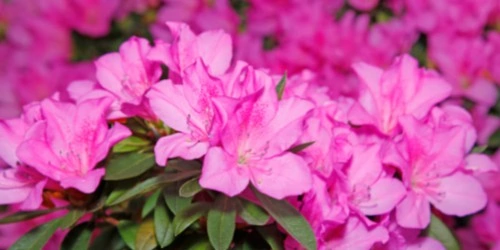
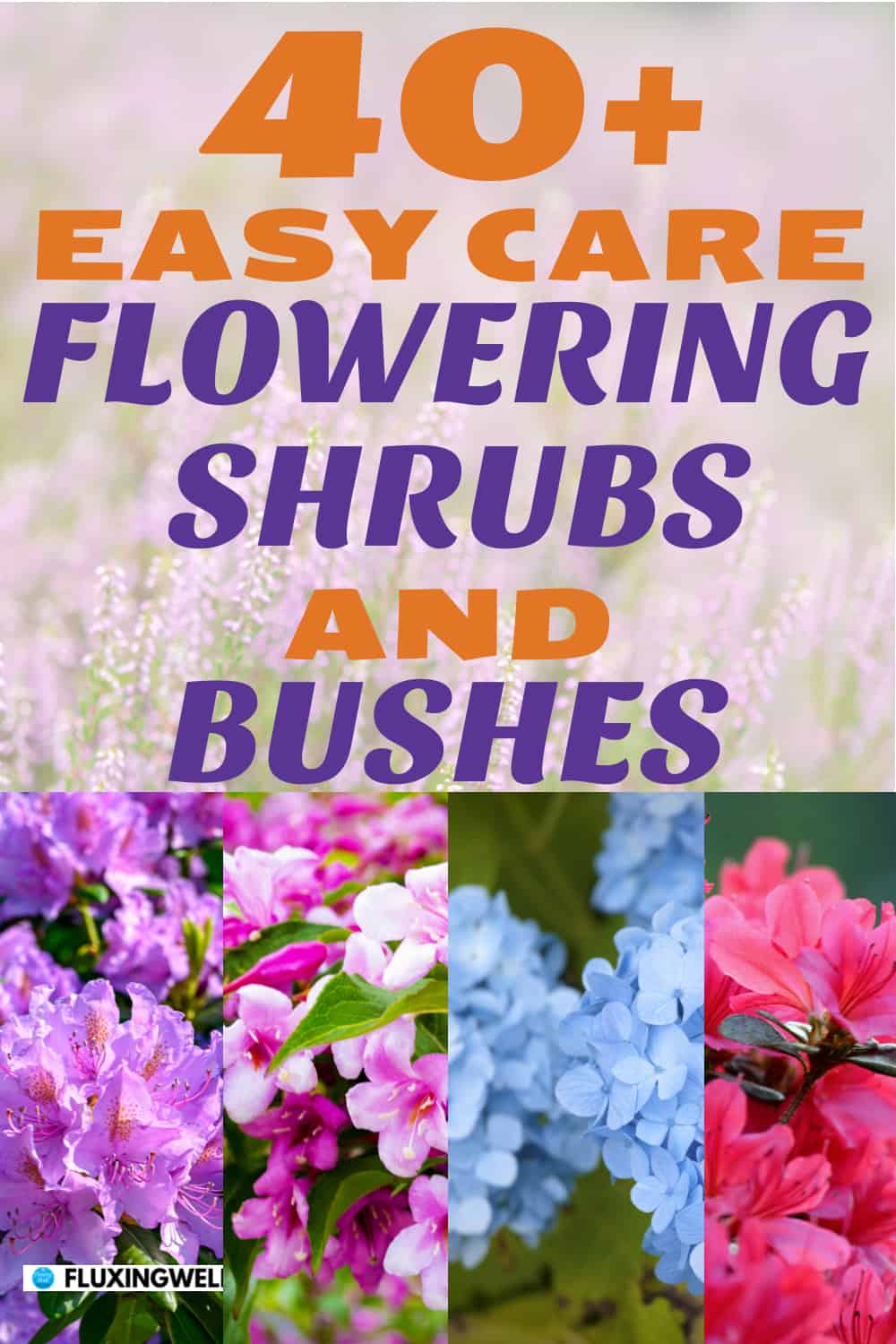
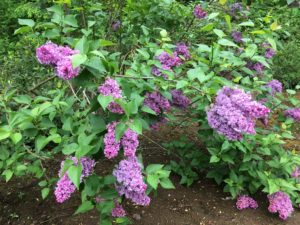

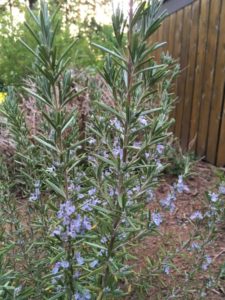

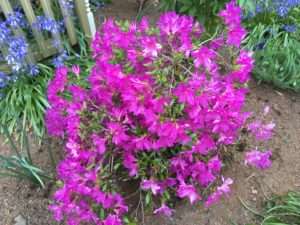


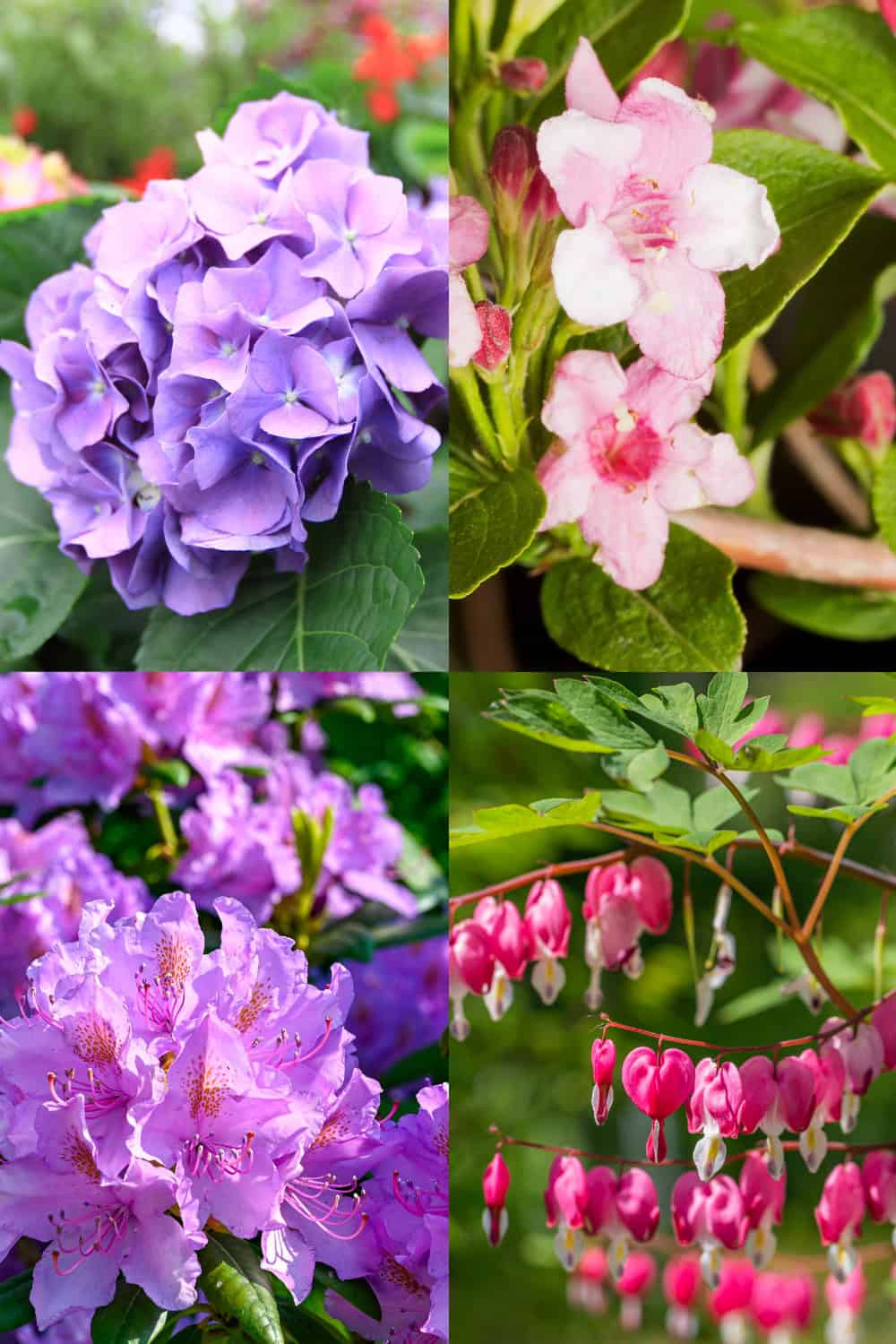
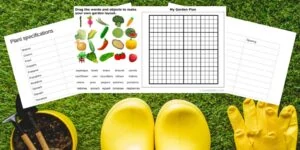


I love flowering shrubs, they can brighten any landscape. Ever since I moved to California I miss some of my favorites from the colder zones: lilacs, hydrangeas, and forsythia. At least I can still grow azaleas, camellias, and hibiscus here. And of course roses. Enjoy the new growing season!
Thank you! You can probably grow citrus, which I would love.
I have been trying to incorporate more flowers into my vegetable garden to help attract pollinators and add more color. Adding some easy-care flowering shrubs into the mix will be a huge benefit, especially since the garden keeps me busy enough, so plants that don’t require a lot of work are right up my alley. I’ll have to do a bit of research to see which ones will do best for my climate. We do have a lilac bush in our front yard that does well.
Nice! If you find some that work well for you, I’d love to know about them.
I have never been able to grow a rhododendron. I’ve gotten instructions from folks who have rhododendron in their yards that are beautiful, but my attempts at planting one have met in failure. Do you have any secrets to planting one and having it grow rather than die?
What kind of soil do you have? Rhododendrons like well-drained, acidic soil. If you have extra coffee grounds, you can sprinkle them on the soil. Rhodies do best in a spot that gets sun for part of the day, but is not full sun exposure. Hope this helps!
I have always loved lavender. Not only does it look pretty, but it’s been proven to be useful for aromatherapy, with a relaxing effect. This is HUGE if you’re feeling stressed or overwhelmed, giving you a great place to relax and recharge.
Britt | http://alternativelyspeaking.ca
Britt,
Yes, lavender has many benefits. I buy lavender-scented items as often as I can. I’ve just never been able to grow it very well. If you can grow it, I’m a bit envious! Thanks so much for sharing your enthusiasm for lavender, and happy gardening!
Lisa
So I think plants have about a month shelf life when they come to my house…up to and including cacti. As such, it was so funny to read that you are not a gardener as I see that so many of your posts revolve around plants. I may just have to branch out and try ONE of these to see how long I can keep it alive. I don’t know that I can do a whole garden, though. #babysteps
Brittany,
I have to give a lot of credit to my hard-working husband. He is the idea person and a much more confident gardener than I am. I am constantly asking for his input before I attempt anything drastic. If you try something, I’d love to know how it turns out. Thanks so much for your comment, and good luck with whatever you decide to try!
Lisa
I don’t really have much of a clue when it comes to gardening but they all look very pretty! I laughed when you said that they must be low maintenance hahah!
Millie,
I’m pretty clueless at times, and always learning something new. My husband and I usually don’t go plant shopping for a specific plant. We take a look at what we have, what we’re given, or what catches our eye, then we decide where we want to put it. Yes, being low-maintenance is definitely a must! Thanks so much for your comment, and happy gardening!
Lisa
I’m in zone 4, and even then my plants can struggle! I have quite a few of the ones you named, but will check out rosemary and lithodora! Thanks!!
AnnMarie,
It seems as if you have quite a bit of gardening experience, and if you are in zone 4, you have colder temperatures than I do in the winter. I’m not sure if rosemary would make it, and maybe not even the lithodora. According to some research I did, lithodora does best in zones 6-10. Maybe if you visit a local nursery, they might have some ideas about a variety of rosemary or lithodora that can withstand cold temps. I admire your bravery and would be interested to know which plants do well for you. Thanks so much for your comment, and good luck with planting hardy plants that can withstand the cold!
Lisa
I love this post! We have a lot of flowering shrubs in Arizona, the oleander is one of the most popular…and poisonous! But it is beautiful!
Holly,
It’s interesting to learn about the plants that grow well in other parts of the country. I haven’t had any experience with oleander, but next time I visit Arizona, I’ll be sure to seek out some plants. Thanks so much for your comment!
Lisa
Aww, i love these – many of them, I know and love, that is, and a few are new to me but SO pretty! I keep trying to grow crape myrtle – we’re supposed to be in a place that can handle some varieties, and plenty of neighbors have them, but the crazy weather of recent years keeps killing my attempts before they get too far along…
Flossie,
Good to hear from you! I don’t know anything about crepe myrtle, but some plants are just temperamental. We have had rock daphne plants die for no discernable reason, so they definitely did not make my list. I’m glad you read about some plants that were new to you. Thanks for your comment, and happy gardening!
Lisa
I love flowering shrubs. We have quite a few azaleas, and I have been wanting to add some Rhododendron as well. I want a couple of Hydrangea plants but I am afraid that I will kill them. I’ve always heard that you have to have the soil just right or they won’t thrive. Is that true, or just hearsay?
Lasonia,
I think more than soil, it might be the amount of sun that is hard on hydrangeas. Too much sun can burn the leaves. Ours do better in a part-shade location. We have never had a problem with the soil. Ours has a bit of clay in it, but it hasn’t seemed to make a difference. I hope you do get to add some rhododendrons, and maybe give a hydrangea a try. I’d love to know how it goes if you do! Thanks so much for your comment.
Lisa